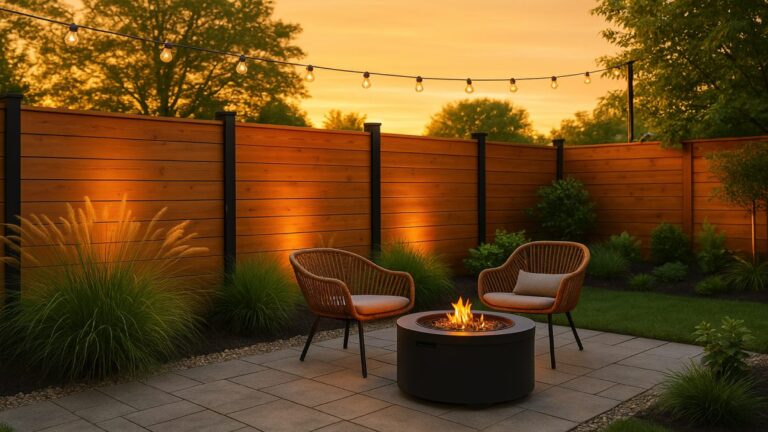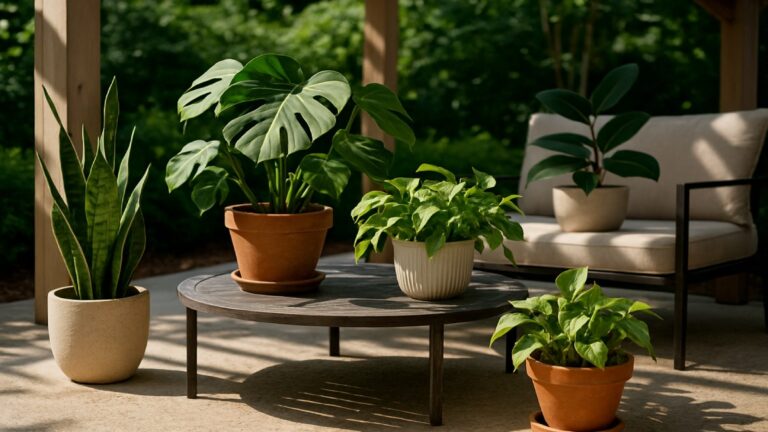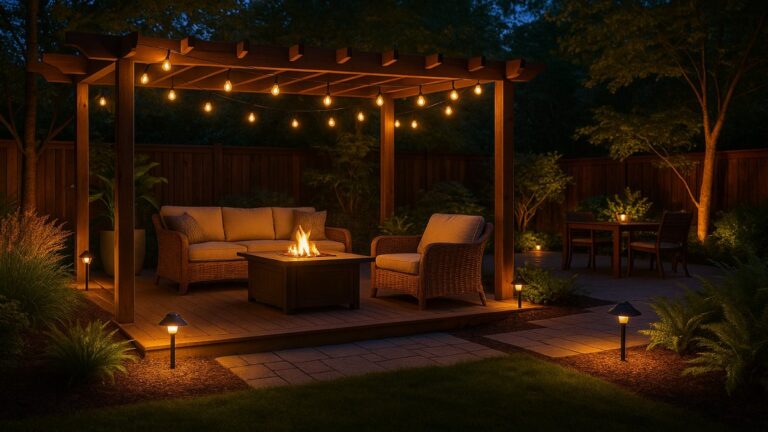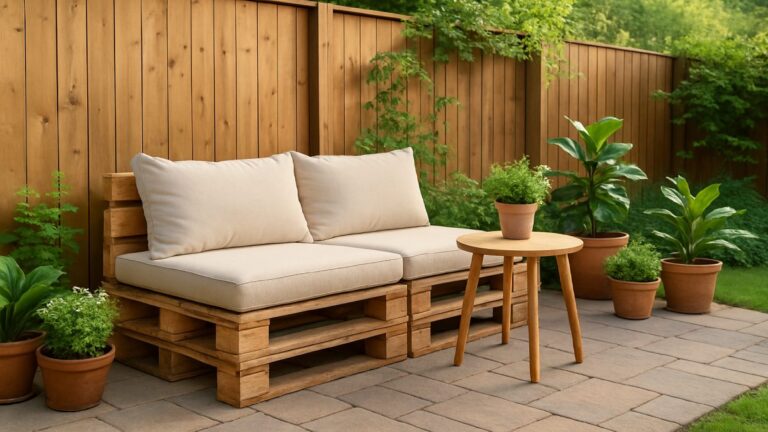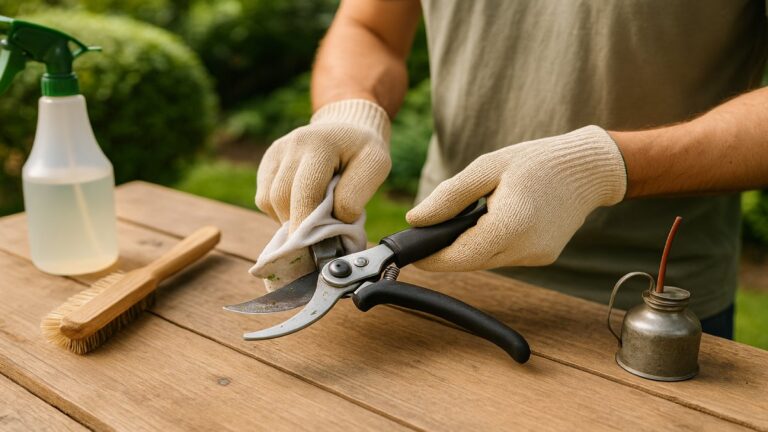Build a Pergola for Shade, Style, All-Weather Comfort
A thoughtfully built pergola turns a plain patio into your favorite room under open sky. The frame casts cool shade, shapes traffic flow, and gives furniture a natural anchor so the space feels intentional. Across the United States, homeowners want more time outdoors without harsh sun or surprise showers, and a well-planned pergola answers that need while boosting curb appeal.
This guide shows how to plan, budget, and build with confidence. You’ll confirm local rules, pick materials that match climate and style, compare open-slat, canopy, and louvered designs, decide between a DIY kit and a pro crew, set a realistic cost range, and adopt care habits that protect the investment. Clear steps and practical examples keep the project moving from idea to shaded, stylish reality.
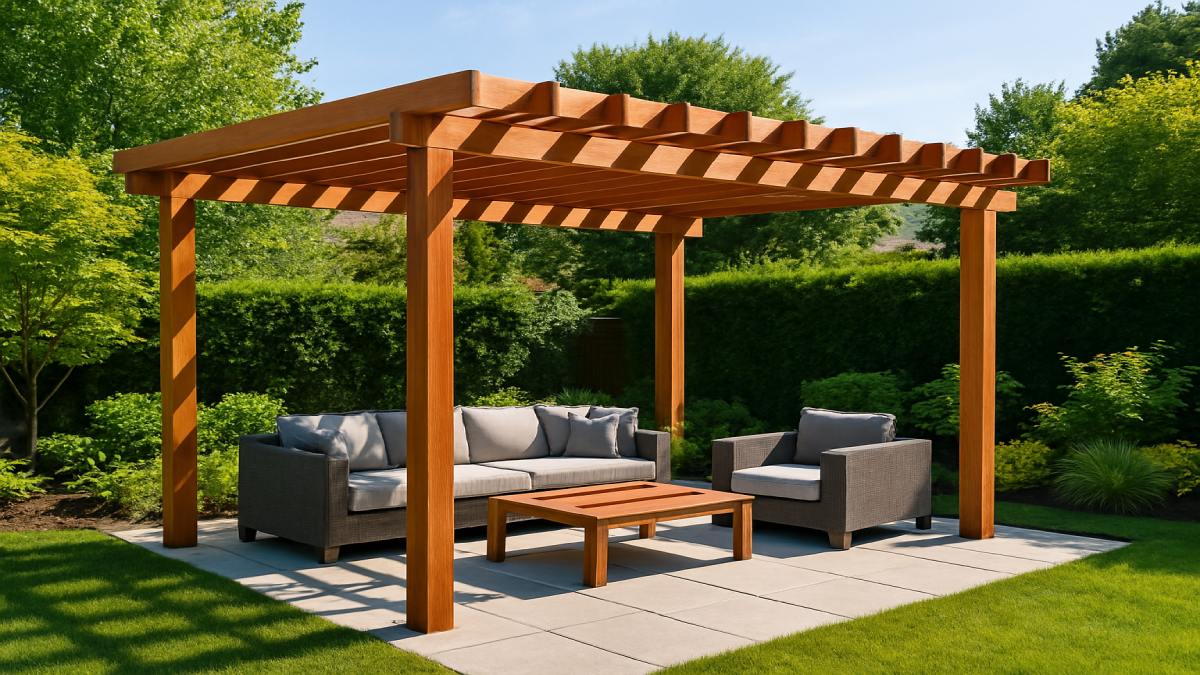
What a Pergola Is—and Why It Works
A pergola is a freestanding or attached structure built with vertical posts and a roof frame of beams, rafters, and often purlins. Traditional versions rely on open slats that filter sunlight. Modern builds introduce retractable canopies, polycarbonate sheets, or motorized louvers that rotate for sun control and close to shed rain into discreet gutters. The format keeps views and airflow while creating a defined outdoor room that never feels boxed in.
The appeal is simple: daytime comfort, warm ambience after dark, and a crisp architectural outline that makes patios, decks, and pool surrounds look finished. Vines soften the frame, side shades add privacy on demand, and low-voltage lighting extends the evening. Many buyers see a tasteful pergola as a lifestyle upgrade, and owners enjoy daily use without the cost or complexity of a full addition.
Key Payoffs at a Glance
- Comfort: Cooler seating, softer light, and better UV control at peak sun.
- Design: Strong lines that organize the patio and frame views.
- Flexibility: Options span open slats, rain-shedding louvers, and retractable canopies.
- Value: Outdoor rooms rank high with U.S. buyers and renters.
Plan First: Local Rules, Smart Site, Clear Goals
Good planning prevents delays and change orders. Start with your city’s building desk. Many municipalities require permits when a pergola passes size or height thresholds, gains a waterproof cover, or includes electrical for lighting and fans. If your neighborhood enforces architectural guidelines, secure HOA approval before ordering materials or booking a crew.
Permits, Codes, and HOA Basics
- Request setbacks, height limits, footing expectations, and any span charts.
- Confirm inspection stages for footings, framing, and electrical work.
- Prepare a simple site plan with dimensions, post locations, and nearest property lines.
- Submit HOA forms early to align expectations and avoid schedule slips.
Size, Location, and Orientation
Lay out furniture you actually use and size the frame to that footprint. Provide clear walk lanes from doors to seating and grills. Hot-sun regions benefit when rafters rotate to throw deeper shade at midday. Breezy sites work better when the house blocks prevailing winds or when side screens stand on the windward edge. Keep the low eave at seven to eight feet for relaxed headroom.
State the Purpose Up Front
Decide what the space must accomplish before you pick materials or hardware. A dining pergola needs even overhead light and durable flooring. A lounge thrives on layered shade, glare control near sunset, and dimmable lighting. An outdoor kitchen calls for reliable rain protection, heat-tolerant finishes, and a vent plan for smoke.
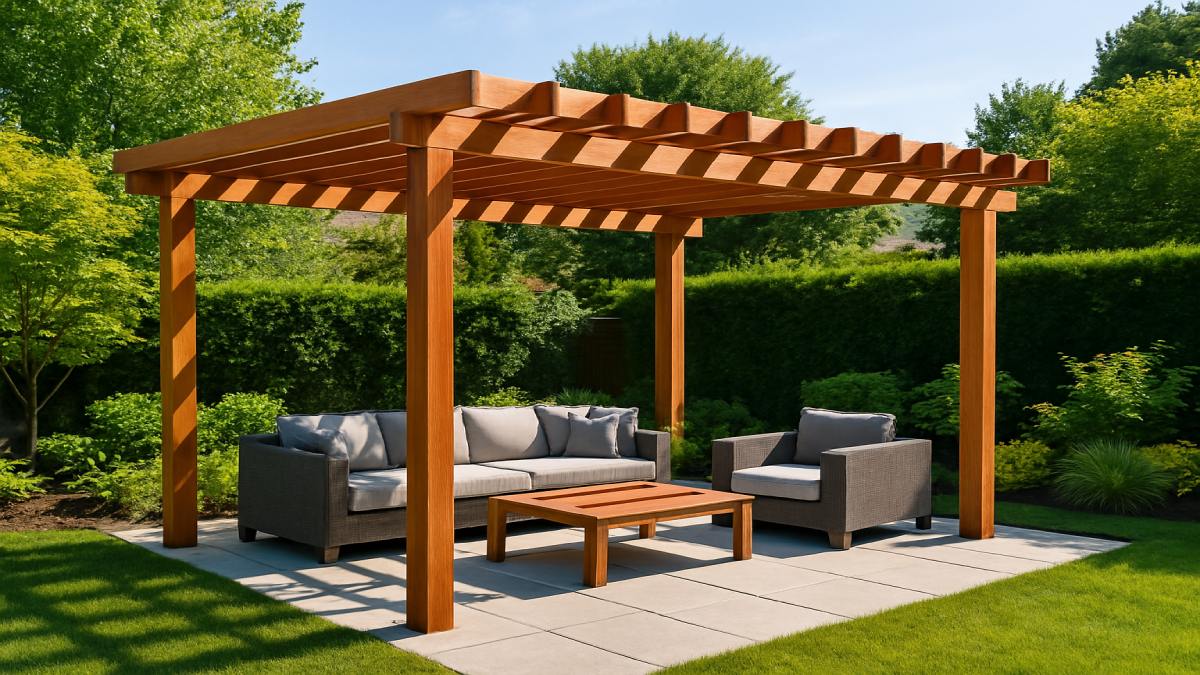
Materials That Fit Budget, Climate, and Style
Material choice drives cost, maintenance, and the vibe of your outdoor room. Each option can succeed with the right detailing and care. Match performance to weather realities, then align finishes with your home so the pergola looks like it has always belonged there.
Wood Pergolas: Warm, Timeless, Custom-Friendly
Cedar and redwood resist decay and take stain beautifully. Pressure-treated pine costs less and accepts paint or solid-color stain after curing. Wood is easy to cut, notch, and shape, which makes it ideal for custom beam ends, decorative purlins, or built-in trellises. If you enjoy hands-on projects and want classic garden appeal, wood remains a top pick.
Pros and Care
- Pros: Natural grain, easy modification, forgiving to work with.
- Care: Annual wash; re-stain or seal every one to three years based on exposure.
- Best Fit: Traditional and transitional homes; landscapes with vines and planters.
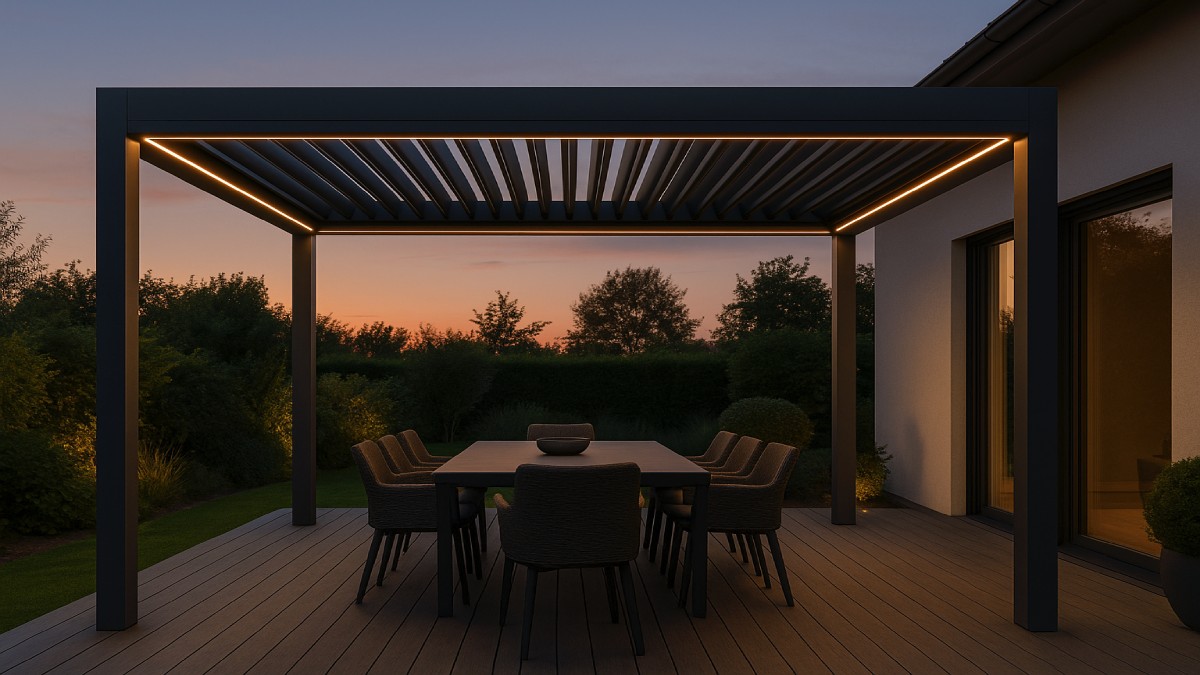
Aluminum Pergolas: Sleek Lines, Low Maintenance
Aluminum systems use powder-coated extrusions and clean fastener details for a crisp, modern look. Many premium offerings add integrated gutters, dimmable LED lighting, and motorized louvers with remote or app control. This category excels in humid, coastal, and high-sun climates where paint and stain cycles can become a chore.
Pros and Care
- Pros: Colorfast finish, strong weather performance, precise louvers.
- Care: Seasonal rinse, occasional hardware check, and basic cleaning.
- Best Fit: Contemporary architecture, coastal zones, busy households.
Vinyl and cPVC: Bright, Clean, Worry-Light
Vinyl and cPVC pergolas offer a fresh painted look without repainting. These materials resist rot and insects, pair naturally with composite decking, and suit sunny or coastal sites that benefit from light finishes. Modern profiles look sharper than early generations and hold up well under routine cleaning.
Hybrid and Solar Options
Hybrid builds combine an aluminum skeleton with wood accents for warmth and strength. Solar pergolas place photovoltaic panels overhead to produce electricity while shading the patio. This approach works well when the main roof faces the wrong direction or you prefer to keep panels off the house.
Design Types and Feature Sets That Elevate Comfort
Match design to climate and daily routine. Early coffee on the patio benefits from a canopy that blocks low-angle glare. Summer storms favor a louvered roof that seals and drains. Outdoor kitchens deserve fixed panels over prep zones for dependable cover without darkening the whole patio.
Open-Slat Classics
Simple rafters and purlins create elegant shadow patterns and allow heat to escape. When you want deeper shade, add breathable shade cloth or train vines along a cable grid. This style keeps the airy garden feel many people picture when they think “pergola.”
Motorized Louvered Pergolas
Louvers rotate to modulate sunlight and close to move rain into hidden gutters. Top systems often include wind and rain sensors that react automatically. Many accept drop-down screens that tame glare and enliven evenings without enclosing the room.
Retractable Fabric Canopies
Performance textiles glide below rafters or ride atop an aluminum frame. Pull the canopy for deep shade at midday and retract it for stargazing after dinner. Look for UV-resistant, colorfast fabrics made for outdoor use so they stay sharp over time.
Polycarbonate and Fixed Panels
Clear or tinted sheets block rain while keeping the patio bright. This option excels over outdoor kitchens and grilling stations that benefit from reliable shelter. A modest slope moves water toward a drip edge or gutter; UV-protected panels hold clarity and resist yellowing.
Comfort and Ambience Upgrades
- LED Lighting: Set scenes for dining, cleanup, and late-night conversation.
- Ceiling Fans: Move warm air and discourage mosquitoes on muggy evenings.
- Side Screens: Add privacy and cut crosswind without building walls.
- Patio Heaters: Extend comfort through shoulder seasons with efficient infrared units.

DIY or Professional: Pick the Path That Fits
Both routes can deliver a top-notch result. Your tool set, schedule, and feature list determine the best choice. A compact cedar kit fits a weekend crew. A large aluminum system with wiring, sensors, and drainage usually benefits from a licensed team that handles engineering and inspections.
DIY Pergola Kits
- Bracket Systems: Steel brackets simplify joinery and speed layout.
- Retail Cedar Kits: Bundled lumber and hardware shorten planning and keep details clear.
- Tools: Basic carpentry tools, ladders, and patience.
What to Expect
Budget one to three days for a medium-size kit, depending on footing cure time and site prep. Check square with diagonal measurements, pre-finish wood for full coverage, and label parts before assembly. Dry-fit key joints at ground level so drilling and fastening overhead goes faster.
Professional Installation
- Engineering and Permits: Crews handle footings, anchors, and paperwork without guesswork.
- Electrical and Accessories: Concealed wiring for lights, fans, heaters, and smart controls.
- Finish Quality: Consistent results, tight miters, and watertight details.
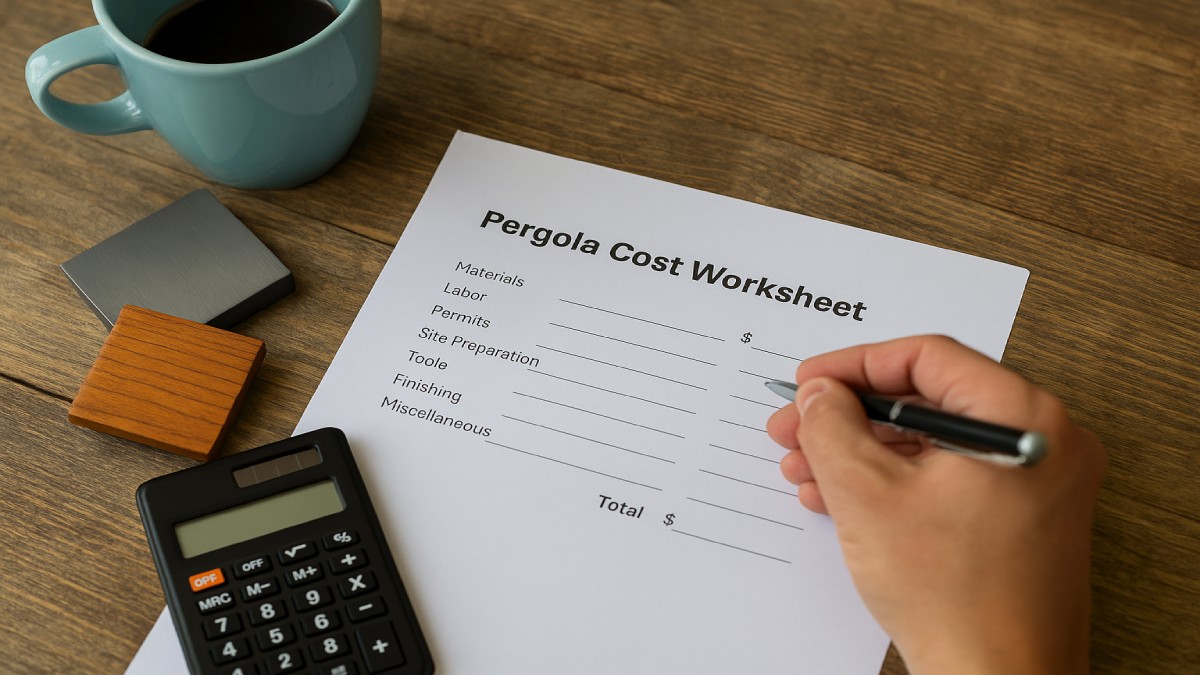
Cost Breakdown and Budget Planning
Set a realistic target early. A simple open-slat wood pergola often lands in the mid-thousands in many U.S. markets. Powder-coated aluminum and louvered systems climb as spans grow and accessories stack up. Regional labor rates change totals, so gather at least two itemized quotes and compare scope line by line rather than focusing only on the bottom number.
Typical Ranges
- Wood Pergola: Budget-friendly upfront; periodic finishing costs.
- Aluminum Kit: Mid to upper range; low maintenance and long service life.
- Motorized Louvered: Highest initial cost; best weather flexibility and convenience.
Ways to Stretch Your Budget
- Prioritize structure and anchors before decor.
- Size for the furniture you truly use.
- Pre-run conduit for future lighting or heat while posts are open.
- Stain or seal wood components before assembly for faster touch-ups later.
Weather Performance and Maintenance
Durability depends on compliant footings, plumb posts, and connections sized for local loads. Product specs assume correct anchoring and square installation. Give those details attention and your pergola will handle sun, wind, and rain for years.
Wind, Snow, and Rain
- Anchor posts to proper footings sized for soil and frost depth.
- Use structural screws or through-bolts; avoid undersized fasteners.
- Close louvers in storms; clear drains regularly.
Seasonal Care
- Rinse dust and pollen each spring; deeper clean after heavy pollen.
- Re-stain or seal wood on a schedule matched to sun and rainfall.
- Trim vines so growth never binds louvers or traps moisture.
- Check fasteners and test lighting each season.
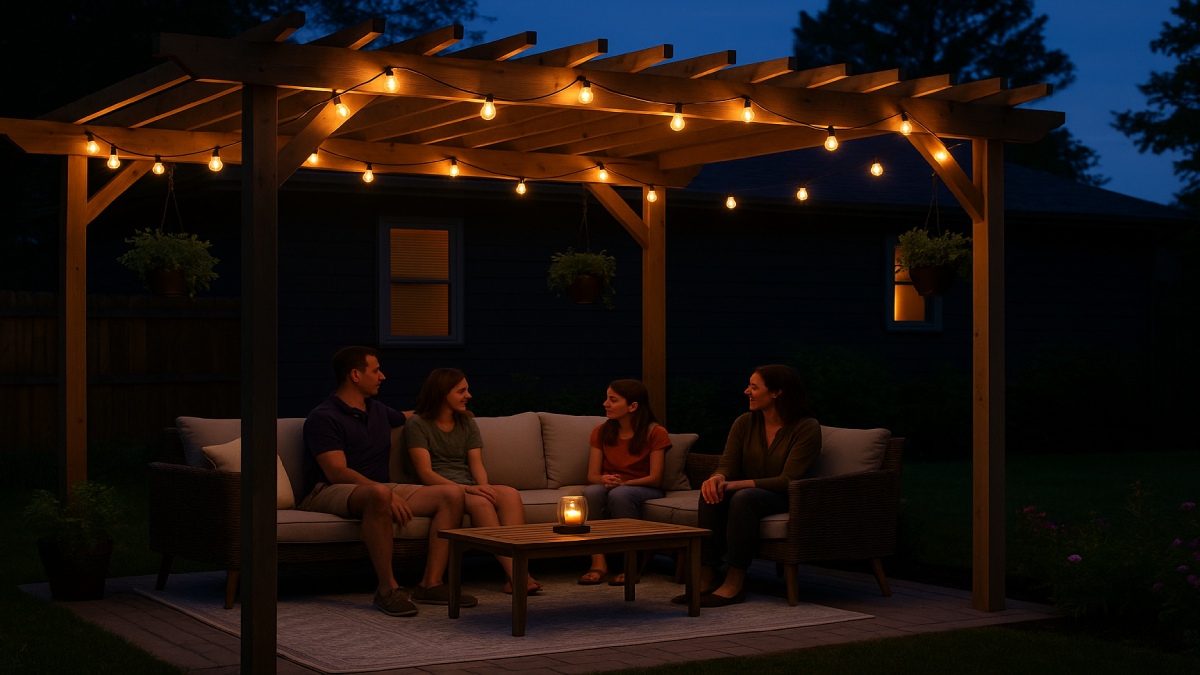
Conclusion: Bring Comfort and Character Outdoors
A pergola adds shade that feels great at noon, soft light that glows after sunset, and a simple framework that makes the whole yard look more refined. With a plan that respects local rules, materials matched to climate, and features tuned to your lifestyle, you’ll create an outdoor room that invites daily use and long evenings.

